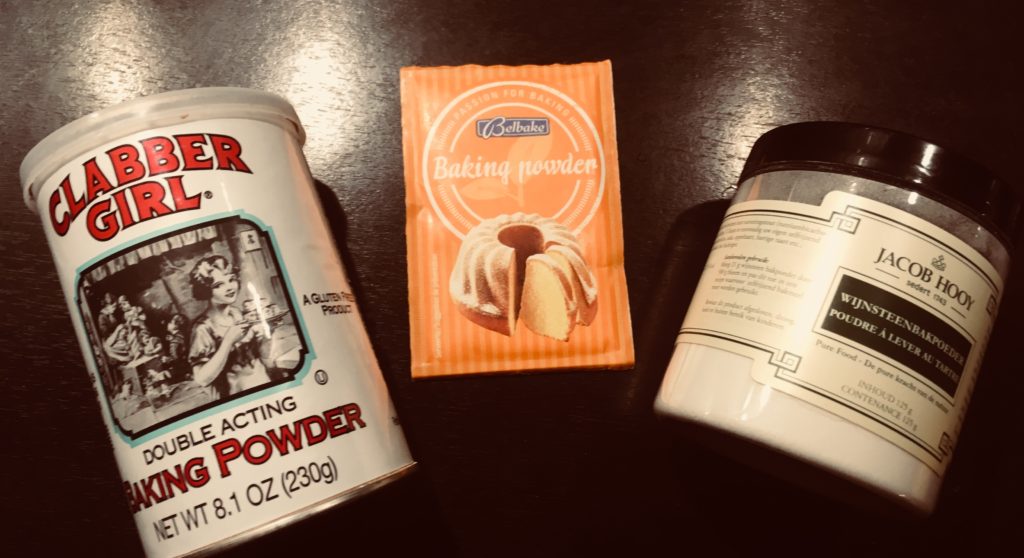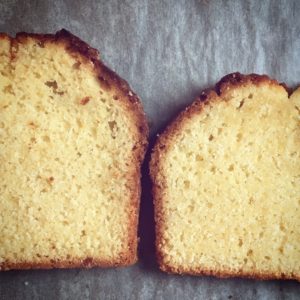It’s been awhile since I’ve written anything, but here’s a quickie update on what’s going on with Project Bakebook:
The past few months I have been working on developing several different classic American recipes for the book. In the midst of this, I got pregnant! yay! And now, my concentration abilities have been noticeably reduced! I decided to put the big bakebook project on hold-for now. But, since I do have many recipes already developed (oddly enough lots of Christmassy ones), I decided to put something together using those! A Christmas bakebook. So, this is seriously in the works, and I’m aiming to be done in the coming weeks. It will contain around 20 classic Christmas recipes that I love and grew up with, now tested and optimized. It will also include some of my artwork + illustrations.
So that’s what I’m currently working on, and now a little story about baking powder...

Since trying to bake anything in the Netherlands, I have struggled with the issue of baking powder. The Dutch use a different type of baking powder that comes in little sachets. It doesn’t work the same. It just doesn’t. None of my recipes were turning out the same: my cakes weren’t rising enough, and they would come out flat and compacted. It was all very frustrating.
In the end, I decided to give up trying and instead import loads of my trusted American baking powder when visiting the US. So, I managed to put off this problem for all those years….until now!
When compiling the Christmas bakebook, I needed to bake a few of my recipes to get some pictures. While mixing together ingredients for my cranberry orange loaf, I reached for my trusted baking powder. Then it dawned on me, ‘oh no, Dutch people don’t have this stuff….crap.’ I realized I would finally have to confront those little sachets, and make Dutch baking powder work for my recipes.
The one thing I knew when starting this experiment is that American baking powder is ‘double-acting’. This mean means that it contains two different rising agents. One is activated by moisture and starts working right away, and one is activated by heat, and therefore works once the batter is warmed up in the oven. I had always understood Dutch baking powder to be ‘single-acting’, meaning containing only one of these rising agents.
Just a quick note: baking powder works differently than baking soda. Baking soda is a rising agent, but can’t function on its own, it reacts to acidity. So in a recipe with baking soda, there will also be an acidic ingredient (like buttermilk) which will cause it to rise. Baking powder contains a rising agent (sometimes baking soda) and also an activating ingredient. So, no extra ingredients need to cause your cake to rise. It’s all contained in the baking powder.
To start trying to solve my problem, I first hit the internet, trying to find some expats that would provide insight. I found all of two things:
1. A forum where someone mentioned wijnsteenbakpoeder (wine stone baking powder) produced fluffier pancakes than the Dutch sachets.
2. An old blog post from an expat in Germany who said the needed to use 50-100% more of the Dutch type of baking powder in her English recipes.
Many other sources simply said that you could always replace Dutch baking powder with American, but never the other way around. Many others just recommended what I’d been doing all along: importing my own!
After this I read through my grandmother’s old Betty Crocker cookbook. This book was written when double-acting baking powder was just becoming popular. According to Betty Crocker, when single-acting baking powder is used, it must be added at the very end of the recipe and baked immediately. This would mean that single-acting American baking powder starts working right away and is therefore moisture-activated.
I always thought that Dutch baking powder was single-acting, and it is. In the ingredients, only one rising agent is named. But, that didn’t seem to match with the baking methods I would find in Dutch recipes. Dutch recipes would add baking powder to the dry ingredients, just like I would with my double-acting baking powder. So, this was all a big mystery.
BUT, after some further research that would make this post way too long…I developed some theories:
1. Dutch baking powder is typically added to dry ingredients so it must be heat-activated
2. The ratio of baking powder to flour called for in Dutch recipes doesn’t match the ratios in my American recipes. After doing the math, I would need to add roughly 30% more Dutch baking powder to my American recipes.
3. Wijnsteenbakpoeder is most likely the same as American single-acting baking powder, so moisture activated. This would explain why it works well in pancakes- pancakes bake quickly and need a rising agent that reacts quickly.

I conducted several trials to test these theories, all using the same loaf cake recipe (sans cranberries):
1. Dutch baking powder, mixed in with dry ingredients:
1.1 Using the same amount called for in recipe;
1.2 Using 100% more;
1.3 Using 50% more;
1.4 Using 30% more.
2. Wijnsteenbakpoeder:
2.1 Using same amount called for and adding at the end;
2.2 Using the same amount called for and adding it with the dry ingredients.
The results:
1.1: Very bad rise, not enough leavening. Sticky and compact texture
1.2: Over-leavened. Rose too much too soon and caved in. Compact and sticky texture.
1.3: Better leavening, but still some caving in. Slightly over-leavened. Nicer texture.
1.4: Perfectly leavened! yay! Fine and soft structure.
2.1: Perfectly leavened! yay! Nice rise, and fine texture.
2.2: Very slow rise, and significantly lower. Not over-leavened. Not bad texture, just more compact, but better result than 1.1.
After these result I tried Dutch baking powder in a cookies recipe (using 30% more) and they came out very well. I also tried wijnsteen in the same cookie recipe with fair results.

My conclusions:
Dutch baking powder is single-acting and activated by heat. It has therefore, a slower rise. This makes it perfectly fine for use in cake and cookies, but not in quicker recipes like pancakes.
You can confidently replace double-acting baking powder with Dutch (sachet-type) baking powder by adding it in with dry ingredients and using 30% more than called for in your recipe.
Wijnsteenbakpoeder is a single-acting and activated by moisture. It starts working immediately. This makes it more suitable for quicker recipes like pancakes. It is also a good alternative to the traditional sachet-type in cake recipes. Just use the same amount called for in your recipe and mix it in at the very very end.
There you go!
I hope this has been helpful to those of you who have also been mystified/frustrated by those pesky little sachets! Also, if you would like my recipe for cranberry orange loaf, it will be in my Christmas bakebook 😉
Cheers!

Thank you!!! I’ve also depended on being able to bring double acting baking powder back with me when visiting the States and recently discovered a store here that sells it…But..,not available either way at the moment. Anyway your article helps me alot !
You’re very welcome! 🙂 Dutch baking powder has been a thorn in my side since moving here, it was a major victory when figured out how I could use it. Happy I could help!
You can buy double acting baking powder in a Chinese “toko” like Amazing Oriental (webshop: https://www.orientalwebshop.nl/catalogsearch/result/?q=baking+powder). This one is Chinese, but they have American brands in the stores all over the Netherlands. I don’t know if the Chinese brand has the same results as American brands, but it’s quite cheap!